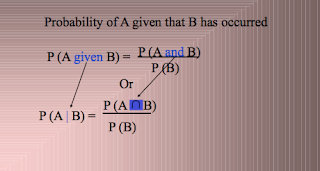- Testing hypothesis is an essential part of statistical inference
- A statistical hypothesis is an assumption about a population. This assumption may or may not be true.
- For example, claiming that a new drug is better than the current drug for treatment of the same symptoms.
- The best way to determine whether a statistical hypothesis is true would be to examine the entire population.
- Since that is often impractical, researchers typically examine a random sample from the population. If sample data are consistent with the statistical hypothesis, the hypothesis is accepted; if not, it is rejected.
Null Hypothesis
- The null hypothesis denoted by H0, is usually the hypothesis that sample observations result purely from chance.
- H0:=
- H1:≠ : two-tail test
- H1:</> : one-tail test
Alternative Hypothesis
- The alternative hypothesis, denoted by H1 is the hypothesis that sample observations are influenced by some non-random cause.
- H1 or Ha
- For example, suppose we wanted to determine whether a tossing a coin was fair and balanced, A null hypothesis might be that half the flips would result in heads and half in tails. The alternative hypothesis might be that the number of heads and tails would be very different. symbolically there hypotheses would be expressed as
- H0:P = 0.5
- Ha:P ≠ 0.5
- Statisticians follow a formal process to determine whether to accept or reject a null hypothesis, based on sample data. This process called hypothesis testing, consists of five steps
- State Null and alternative hypothesis (based on population mean.)
- Write down relevant data, select a level of significance;α (rejection area)
- Identify and compute the test statistic Z to be used in testing the hypothesis.
- Compute the Critical values(the line which is between rejection area and non rejection area) (boundary) Zc
- Based on the sample arrive a decision
- if the standard diviation is known
- number of sample>30
But when the population variance is unknown, we must use the standard deviation s, to estimate σ
We use t distribution instead of Z distribution.
- if the standard deviation is unknown
- number of sample < 30
Decision Errors
- Two types of errors can result from a hypothesis test.
- Type I error: A type I error occurs when the null hypothesis is rejected when it is true. Type I error is called the significance level. This probability is also denoted by alpha, α.
- Type II error: A type II error occurs when the researcher accepts a null hypothesis that is false. H0 is accepted.
| Null Hypothesis |
Accept H0 | Reject H0 |
| H0 isTRUE | Correct Decision | Type I error |
| H0 is FALSE |
Type II error | Correct Decision |
One-Tailed Tests
- A test of a statistical hypothesis where the region of rejection is on only one side of the sampling distribution, is called a one tailed test.
- For example suppose the null hypothesis states that the mean is equal to or more than 10. The alternative hypothesis would be that the mean is LESS than 10.
- The region of rejection would consist of a range of numbers located on the LEFT side of sampling distribution, that is a set of numbers LESS than 10.
Two-Tailed Tests
- A test of a statistical hypothesis, where the region of rejection is on both sides of the sampling distribution, is called a two-tailed test.
- For example, suppose the null hypothesis states that the mean is equal to 10. The alternative hypothesis would be that the mean is less than 10 or greater than 10.
- The region of rejection would consist of a range of numbers located on both sides of sampling distribution; that is the region of rejection would consist party of numbers that were less than 10 and partly of numbers that were greater than 10.
df=degree of freedom =n-1
The concept- The concept of degrees of freedom is central to the principle of estimating statistics of populations from samples of them
- The number of scores that are free to vary
- In many situations, the degrees of freedom are equal to the number of observations minus one.
- Used if the sample number is LESS than 30.















































